Viewing a total lunar eclipse is a subtle yet inspiring event. The ever-present moon takes on a strange shape not normally seen and at the event peak, the moon’s color turns to a red or amber. Stars peek out closer to the moon as the sun’s reflection is no longer direct and harsh. If you are seeking out went the next total lunar eclipse will be best seen in Michigan and the other states in the upper Great Lakes region we have you covered. (Ha Ha)
Partial Lunar Eclipse November 19, 2021
The eclipse on November 19, 2021, was almost complete, with 97 percent of the Moon in shadow during mid-eclipse. Those wishing to get a glimpse of this celestial spectacle had to set their clock to just after midnight on Friday morning to see the lunar eclipse in Michigan as the Moon slides into Earth’s shadow.
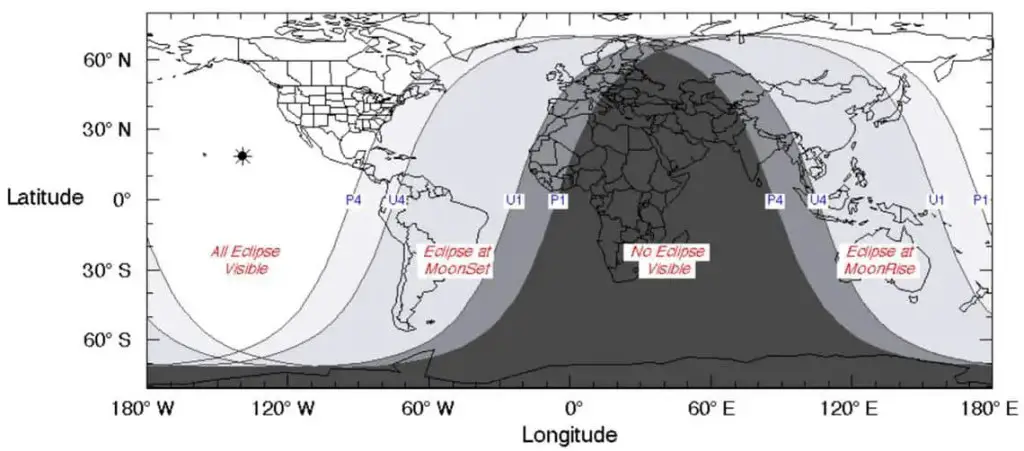
The eclipse was be seen from half of the Earth’s surface. Although the Americas were favored, watchers in northern Europe, eastern Asia, Australia, and the Pacific also noticed the event. The star denotes the location in the mid-Pacific Ocean where the Moon will be completely obscured.
Viewing Opportunities For Seeing the Lunar Eclipse In the Upper Thumb Was Questionable.
The forecast for that early Friday morning called for mostly cloudy conditions. Not suitable for seeing this event. However, if you were lucky and it cleared up, the best place to see it may be Port Crescent State Park near Port Austin. The park is one of two dark sky preserves and parks in Michigan’s lower peninsula that offer stellar celestial viewing. These locations limit the amount of artificial light, making them prime dark sky viewing areas.
What Happened To The Moon Friday Morning November 19th, 2021
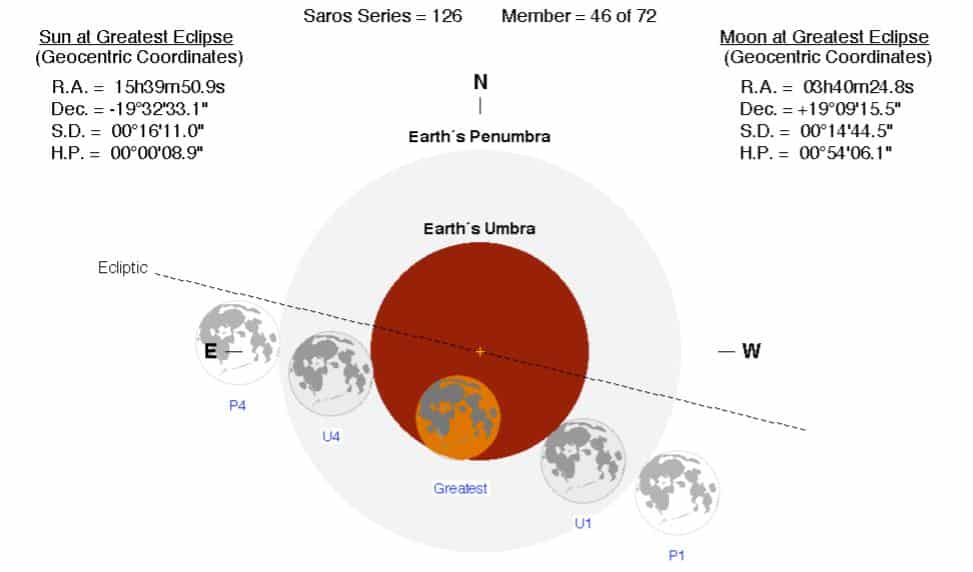
The near-complete eclipse began around 2:18 am EST, with a gray penumbral shadow running along the upper left border of the Moon. The greatest amount of shadow was be observed between 3:45, and 4:15 am EST. During that half-hour, the Moon passed through mid-eclipse (when it is the deepest) and slowly began to rise again. The partial eclipse’s event ended around 5:47 am, for a total event period of roughly 3 1/2 hours.
Phases of the Partial Lunar Eclipse in Michigan on Friday, November 19th.
We typically have two lunar eclipses every year, while some years have three or none. The eclipse that took place on Friday morning was considerably better, though not total. At 4:03 am EST, the Moon was being thrown into the Earth’s inner shadow for 97 percent of the time. As a result, only its bottom border was visible in the penumbra.
Full Lunar Eclipse in Michigan Monday May 16, 2022
The eclipse on May 16, 2022, will be complete for about half of North America, including Michigan. Viewers will see 100 percent of the Moon in shadow during mid-eclipse. Those wishing to get a glimpse of this celestial spectacle may start to see the Preumbral event starting Monday evening at 9:32 pm. By 11:29 pm the moon starts to totally enter the earth’s shadow. The umbral event peaks at 12:11 am. The moon will be in the Umbra shadow for 1 hour and 25 minutes. By 2:50 am the lunar eclipse will be over.
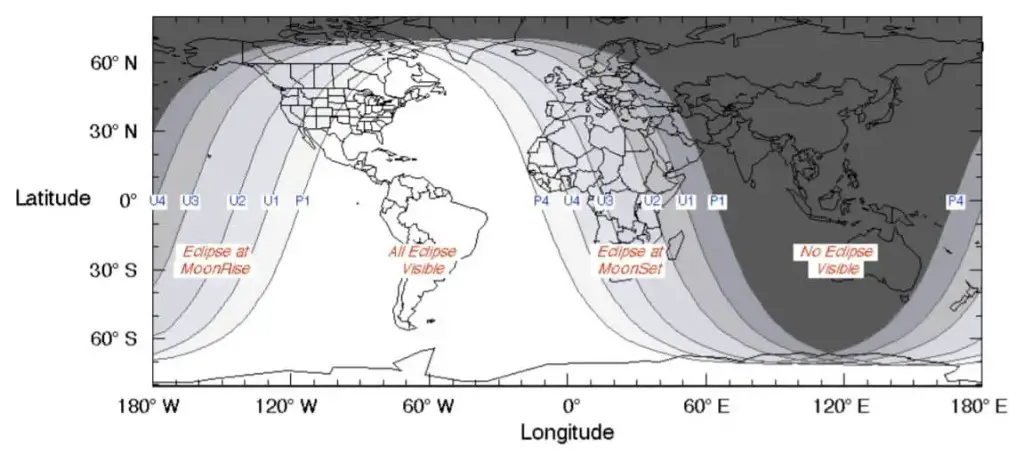
The eclipse was be seen from half of the Earth’s surface. The Americas are favored, watchers in northern Europe, west Africa, and the South Pacific will also witness the event.
What Will Happen To the Moon May 16, 2022
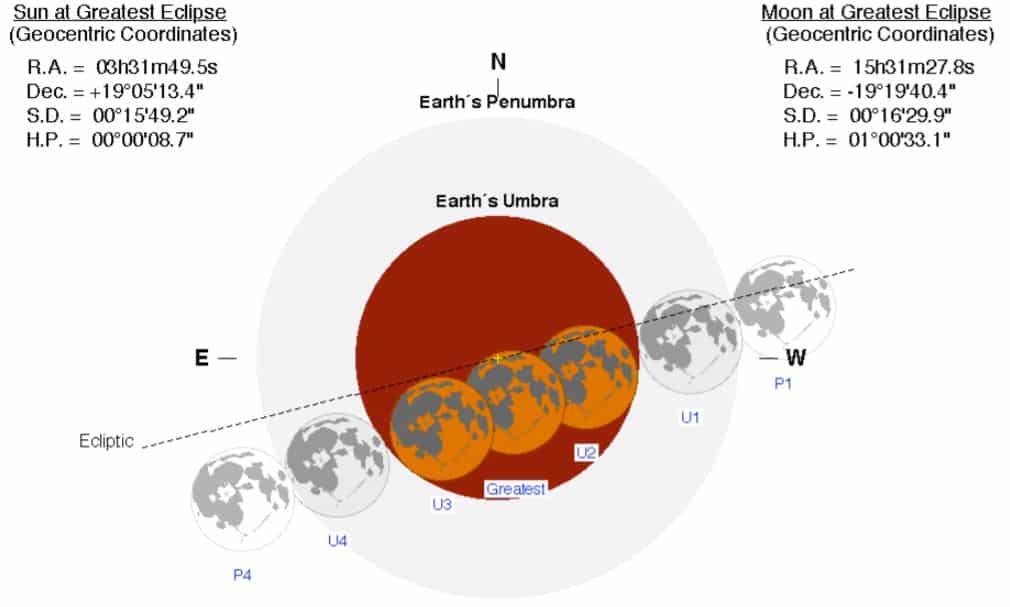
The complete eclipse begins around 9:32 am EST, with a gray penumbral shadow splitting the Moon. The greatest amount of shadow was be observed between 11:29 pm, and 12:53 am EST. During that almost hour and a half, the Moon will pass through mid-eclipse (when it is the deepest) and slowly begin to rise again. The partial eclipse’s event will end at 2:50 am, for a total event period of roughly 5 hours and 19 minutes.
What Makes A Lunar Ecipse?
A lunar eclipse happens only during a full moon when the Moon aligns with the Earth and passes into its shadow. On Earth, at dusk on any clear evening, you can see the planet’s shadow rise along the eastern horizon. It appears as a purplish-gray band and extends halfway around the sky. The shadow is divided into an inner, black umbra where the Earth’s globe hides the sun and an outer penumbra. Because the Earth only partially covers the sun in the outer shadow, some sunlight sneaks in and dilutes the shadow.
The Moon would seem black during a total lunar eclipse if the Earth did not have an atmosphere. The atmosphere, however, refracts reddish sunlight brushing the planet’s edge into the Earth’s umbra, giving the lunar disk a red tinge during totality. Another impact is that the stars may be seen right up to the Moon’s edge since the Moon’s light reflection has been subdued.
Why is the Moon Red During a Total Lunar Eclipse?
When sunlight passes through the Earth’s atmosphere, it is refracted towards the surface, and some of it—colors with shorter wavelengths—is scattered and filtered out, while the remainder, such as orange and red, passes through. This light is refracted once again towards the totally eclipsed Moon’s surface, lighting it with a reddish-orange glow. A total lunar eclipse is sometimes referred to as a Blood Moon because of this.
Fun Fact – A Solar Eclipse Happens Near a Lunar Eclipse
A lunar eclipse is usually two weeks before or after a solar eclipse. Normally, there are two eclipses in a row, however, there have been occasions when there have been three eclipses in a row within the same eclipse season. On April 30, 2022, there will be another partial solar eclipse.
When is the Next Full Eclipse for North America in 2022?
The full lunar eclipse of May 16, 2022, is actually the second one of 2022. The first partial eclipse is April 30th but is only visible in South America. the next good opportunity for North America to see a total eclipse will be the early morning of November 7-8 2022. But, unfortunately, after that, it looks like you will have to wait until March 13-14, 2025 to see the next one.
Related Reading For Michigan’s Star Gazing & Lunar Eclipse
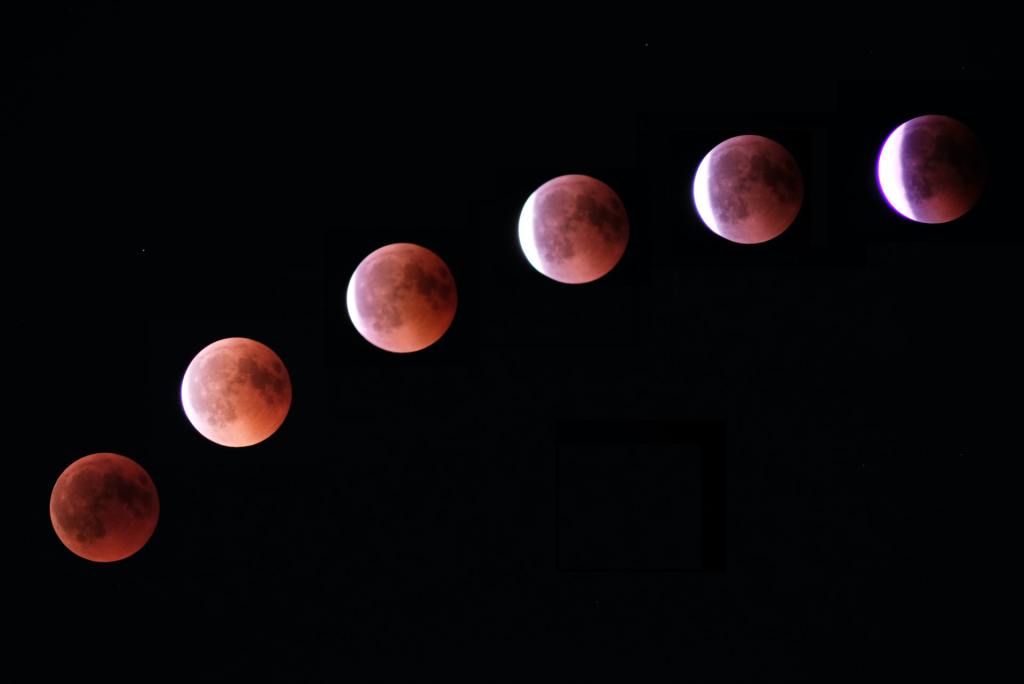
Astronomers View the Stars & Lunar Eclipse at Michigan’s Port Crescent State Park – Huron County Michigan, represents the tip of the “thumb” of the state. The Port Cresent State Park in this rural area provides an ideal view of the stars without light pollution found in the big cities. The Dark Skies Project for nightlife in this community can often represent a connection with nature, including unobstructed stargazing presenting sights not seen elsewhere.
How to Prepare and View the Northern Lights in Michigan – Being a year-round tourist destination, Michigan packs a treasure trove of attractions for all kinds of travelers. Of course, seeing the northern lights in Michigan is a highlight of the year.
Camp or Glamp On The Beach & Under the Stars in Michigan’s Thumb – It used to be that staying overnight in a state park meant pitching a tent or hauling an RV. Of course, visitors can still do that, but as travelers’ needs and preferences have changed, so have the options available with Michigan State Park lodging.
Midnight on Hurons Dunes – Standing on an ancient Lake Huron sand dune where our cottage sits listening to the surf…
Secrets of Michigan’s Albert E. Sleeper State Park – Sleeper State Park was the first state park in the Thumb. It has been a place to visit for over 95 years with an excellent beach and modern campsites. Named for Michigan Governor and local businessman Albert E. Sleeper, the park is one of two state parks in the Upper Thumb. Visitors can watch both sunrises and sunsets on Saginaw Bay. Rest and relax in the shade and seclusion under the tall oaks in the campground Roam the trails of the ancient dune forests.

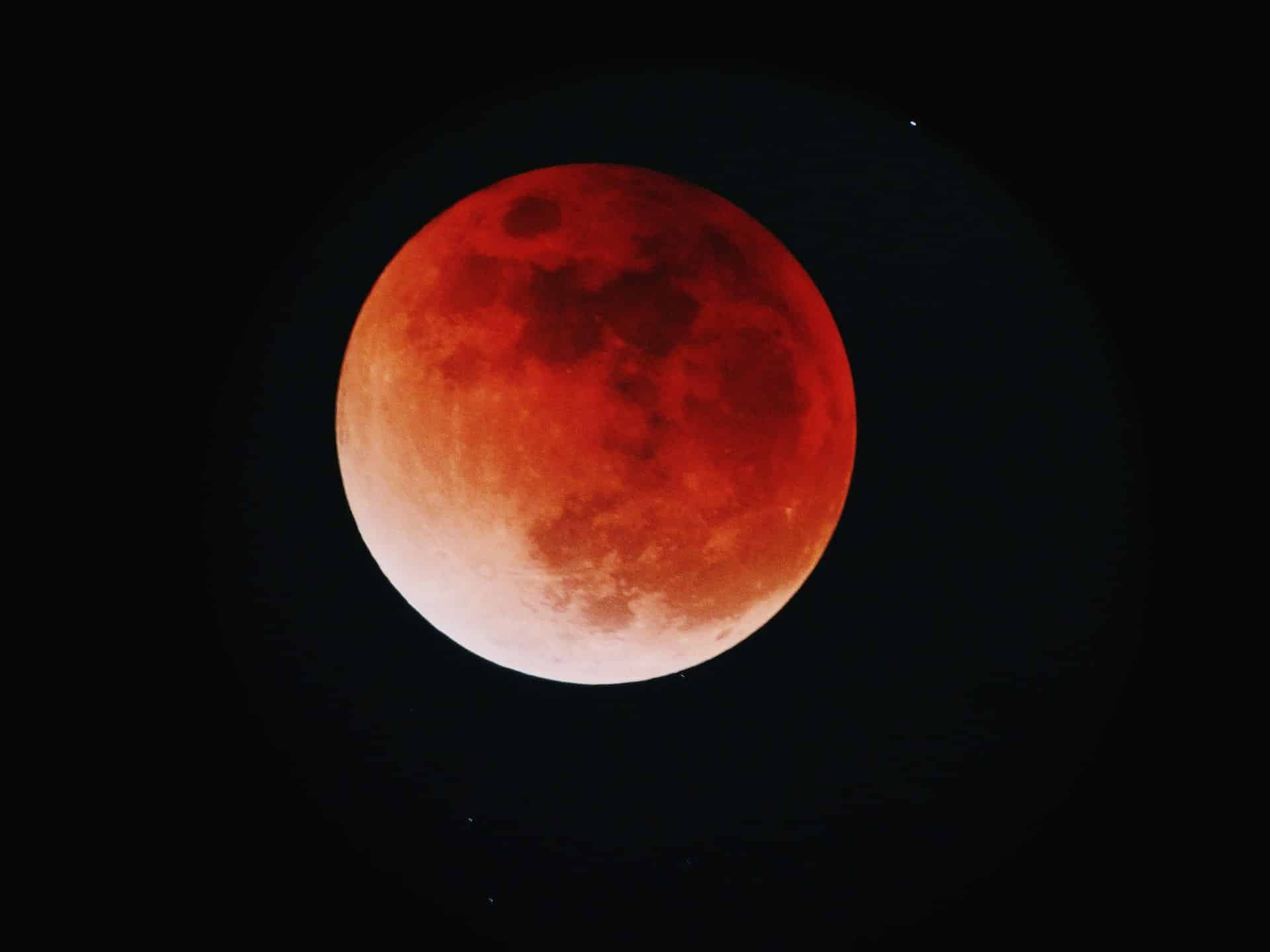



Good info. Thank you.